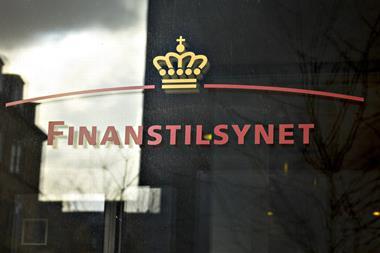Spain’s occupational pension funds made average returns of 2.88% over the 2015 calendar year, according to the country’s Investment and Pension Fund Association (INVERCO).
The return is an improvement on the 1.58% for the 12 months to the end of September 2015 but lower than the 7.14% recorded for calendar 2014.
INVERCO pointed out, however, that the 2015 performance was achieved against a background of increased market volatility, during which Spain’s IBEX35 equity index dipped 7%, while Spanish long-term government debt also fell in price.
Average annualised returns for Spanish occupational funds were 5.96% for the three years to 31 December 2015, and 5.18% for the five years to that date.
As of the end of December, total assets under management for the occupational pensions sector stood at €35.5bn, an increase of 0.8% over the past year.
Total pension assets, including those in individual plans, now amount to €104.5bn, while the number of participants in the occupational system remains stable, at just over 2m.
For Spanish pension funds as a whole, the recent shift towards domestic assets has halted; they formed 61.4% of portfolios at end-December 2015 compared with 64.8% at end-September 2015.
Non-domestic holdings grew from 19.4% at end-September 2015 to 22.1% three months later.
Fixed income investments make up 57.4% of portfolios, down 2.5 percentage points since end-September.
This compares with 22.6% invested in equities, an increase of 2.1 percentage points over September.
Of this, 8.6% is in Spanish shares, with 14% in non-domestic shares.
The biggest single component of pension fund portfolios – 33.3% – is still invested in Spanish government bonds, with a further 15.9% in Spanish corporate bonds.
David Cienfuegos, head of investment for Spain at Willis Towers Watson, said that, for company pension funds, the return distribution per fund for 2015 had been wider than usual due to three main factors.
“Pension funds with better governance structures have been worried about equity valuations and economic growth over the past two years and have been gradually and marginally reducing exposure to equities to increase their alternative credit allocations,” he said.
In addition, according to Cienfuegos, some large and medium-sized company pension funds have increased their overall strategy diversification in recent years, which implies a greater exposure to US dollar assets, among other things.
This, he said, means they benefited from the US dollar rally in 2015.
“Thirdly,” he added, “the more conservative pension funds continue to have larger local exposure, in terms of equity and fixed income. It hasn’t turned out too badly for them in 2015, as the European Central Bank continues to expand its monetary policy.”
Cienfuegos concluded, however, that those corporate pension funds that fared better in 2015 might not be the best prepared to face the events of the next few years.
“There’s still time to reassess the global risks and how those could affect their investments, as well as to determine what impact extreme events could have in their overarching goal for the corporate pension fund,” he said.
“Governance is even more relevant in an uncertain and volatile environment.”
Meanwhile, preliminary estimates from Mercer’s Pension Investment Performance Service (PIPS) confirm the INVERCO results, showing that Spanish pension funds returned 3% on investments over the 2015 calendar year.
The PIPS covers a large sample of Spanish pension funds, most of them occupational schemes.
Negative returns were experienced for all three main asset classes during December, with fixed income performing best, returning -0.8%.
Non-EU equities returned -4.5% for the month, while EU equities performed worst of all, with a -6.7% return.
The overall average return for the month was -2%.
Over the calendar year, however, equities as a whole outperformed fixed income by a wide margin.
Non-EU equities did best with a return of 8.9%, while EU equities made 7.8%.
Fixed income returned 0.9%.
Mayte Gonzalez, an investment consultant at Mercer, said: “Last year was a complicated one for pension plans in Spain, but the managers expected a year with high volatility, and they had prepared the portfolios with this in mind to mitigate market crashes.”
But she added: “The falls in stock markets that happened during the last month of the year cancelled out the many gains accumulated until November.”




























No comments yet